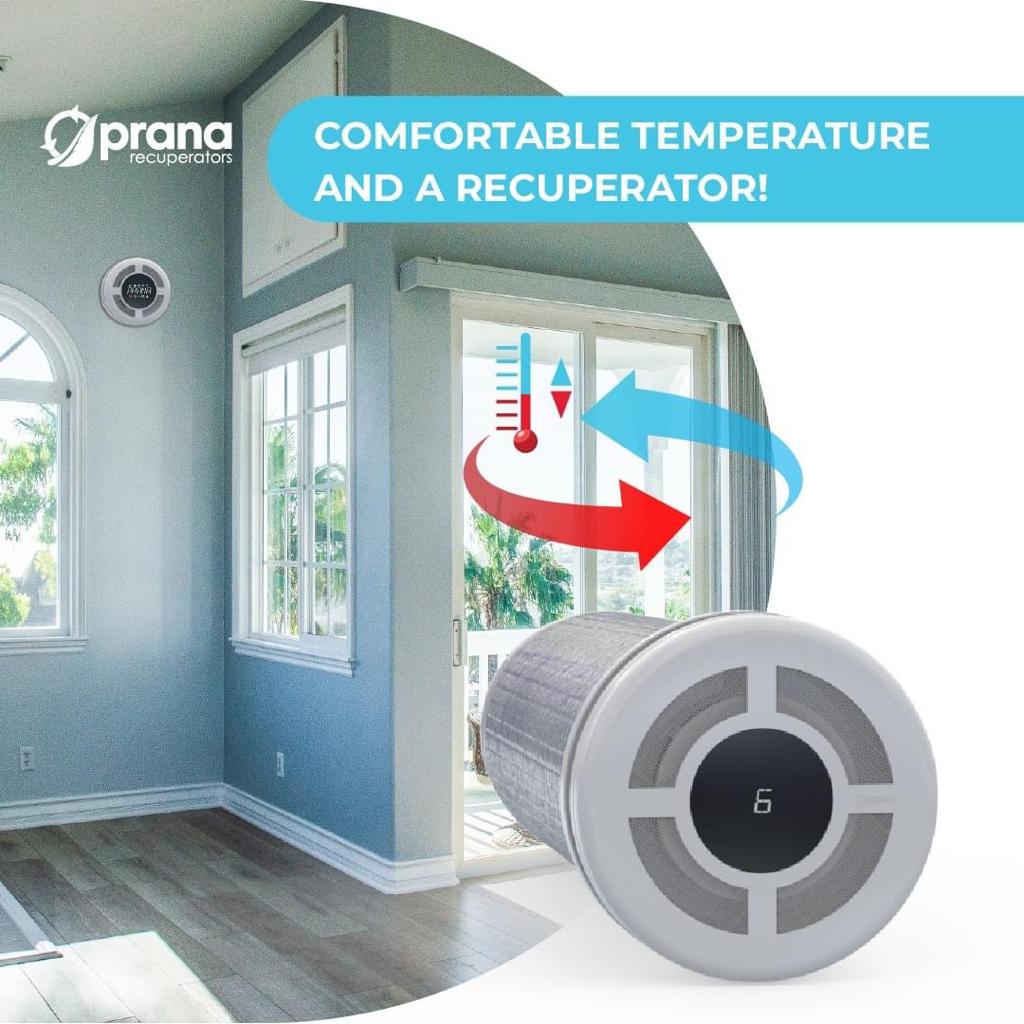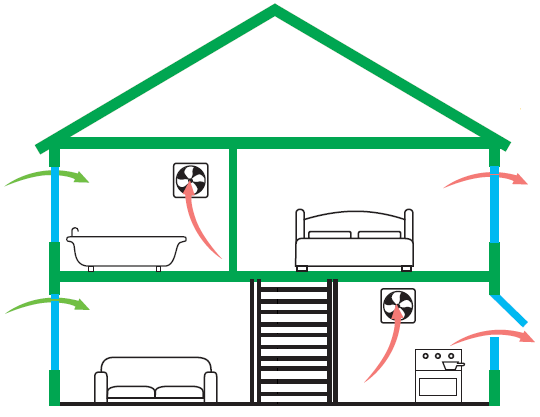Home Ventilation Melbourne Solutions for Energy-Efficient Homes
Wiki Article
Comprehending the Significance of Home Air Flow for a Healthier Living Environment
Home air flow plays an essential role in maintaining a healthy and balanced living environment. It facilitates the exchange of exterior and interior air, which is very important for boosting air top quality. Without proper air flow, homes can end up being reproducing grounds for allergens and toxins. The consequences of inadequate air circulation can be significant. This brings up the query of how house owners can efficiently execute ventilation methods to secure their health and wellness. Comprehending these approaches is imperative.
The Essentials of Home Air Flow
Home ventilation works as a crucial element of interior air top quality and convenience. It includes the process of exchanging stagnant interior air with fresh exterior air, thus reducing moisture and managing temperature level. Appropriate ventilation systems can include natural approaches, such as open home windows and vents, along with mechanical systems, such as exhaust fans and air exchangers. Reliable home ventilation aids protect against problems like interior mold growth and the accumulation of harmful particles. It likewise boosts overall power effectiveness, as well-ventilated areas can maintain comfortable temperatures with less dependence on home heating and cooling down systems. Comprehending the essentials of home air flow is important for property owners seeking to produce a healthier living environment for themselves and their families.
Common Resources of Indoor Air Pollution

Although several may not recognize it, indoor air contamination can stem from different resources within a house. Usual contributors include unstable natural substances (VOCs) given off from paints, solvents, and cleansing items. Household appliances, such as gas ovens and fire places, can release damaging gases like carbon monoxide gas and nitrogen dioxide. In addition, mold and mold grow in damp locations, releasing spores that influence air quality. Pet dog dander, dirt mites, and plant pollen can collect indoors, further aggravating contamination levels. Smoking inside produces poisonous chemicals that remain airborne. Lastly, developing materials, including asbestos and formaldehyde, can off-gas dangerous substances. Recognizing these resources is vital for keeping a healthier interior environment and advertising reliable ventilation approaches.
Health Effects of Poor Air Flow
Indoor air contamination can have considerable health effects, particularly when air flow is insufficient. Poor air flow can result in the accumulation of harmful pollutants, such as unpredictable organic substances, mold and mildew, and particulate matter. This accumulation may cause respiratory system concerns, consisting of bronchial asthma, allergies, and persistent obstructive lung condition. People may experience signs like migraines, exhaustion, and irritability of the eyes, nose, and throat. Susceptible populaces, such as children and the elderly, are at greater danger for extreme health impacts. Long-term direct exposure to improperly aerated atmospheres can also contribute to much more severe problems, including cardio illness. Making certain correct air flow is necessary for keeping a healthy and balanced living setting and reducing the risk of health problems associated with indoor air pollution.Reliable Air Flow Methods for Your Home
Proper ventilation is vital for maintaining a healthy indoor environment, and executing efficient methods can greatly improve air high quality. House owners can begin by making sure that exhaust fans are installed in bathrooms and kitchens to remove excess moisture and smells. Opening up home windows consistently allows fresh air to circulate, specifically throughout light weather. Additionally, using air purifiers with HEPA filters can aid catch airborne toxins. For homes with home heating and cooling systems, preserving HVAC systems and altering filters frequently is vital for peak performance. Including natural ventilation techniques, such as cross-ventilation, can also improve air flow. Securing any leakages in doors and home windows stops undesirable drafts, which can interfere with controlled airflow, eventually leading to boosted interior air top quality and convenience.Keeping Ideal Air High Quality Year-Round
To keep ideal air top quality year-round, house owners have to take on a positive strategy to handling their indoor atmosphere. Frequently checking indoor air top quality is crucial; this includes monitoring for toxins such as dust, mold, and unpredictable natural compounds (VOCs) Executing reliable air flow systems, such as exhaust fans and air purifiers, can significantly minimize air-borne impurities. Additionally, routine upkeep of heating and cooling systems guarantees peak performance and air circulation. Property owners need to also take into consideration moisture levels, as too much dampness can cause mold and mildew development. Seasonal modifications might demand changes in ventilation methods to suit differing outdoor air quality. By prioritizing these practices, house owners can develop a healthier home, promoting overall health for all passengers throughout the year.Frequently Asked Inquiries
Exactly How Can I Tell if My Home Demands Better Air Flow?
To establish if a home calls for far better ventilation, one should observe indicators such as consistent moisture, mold growth, mildewy smells, condensation on windows, or enhanced allergy signs and symptoms, indicating insufficient air flow and potentially poor indoor air high quality.What Are the Signs of Poor Indoor Air High Quality?

Can Houseplants Improve Indoor Air Quality Properly?
The performance of houseplants in enhancing indoor air quality is debated. While some researches suggest they can absorb contaminants and generate oxygen, their general effect might be minimal compared to proper ventilation and air purification systems.How Typically Should I Adjustment My Air Filters?
The frequency of air filter modifications typically depends upon usage and filter kind. Generally, it is advised to replace filters every three months, though households with allergies or animals might call for more regular changes for ideal efficiency.Are There Any Specific Air Flow Solutions for Allergic Reaction Sufferers?
Lots of air flow systems, such as HEPA-filtered devices, effectively decrease allergens airborne. Home Ventilation Melbourne. These systems trap dirt, animal, and plant pollen dander, providing allergic reaction patients with a cleaner, much healthier indoor environment while managing air quality successfully
It assists in the exchange of outside and interior air, which is important for enhancing air top quality. Home ventilation serves as a crucial element of interior air top quality and comfort. It entails the procedure of exchanging stale indoor air with fresh exterior air, thereby lowering humidity and controlling temperature. Indoor air weblink pollution can have substantial health effects, specifically when ventilation is inadequate. Proper air flow is essential for maintaining a healthy and balanced interior environment, and applying efficient techniques can considerably improve air top quality.
Report this wiki page